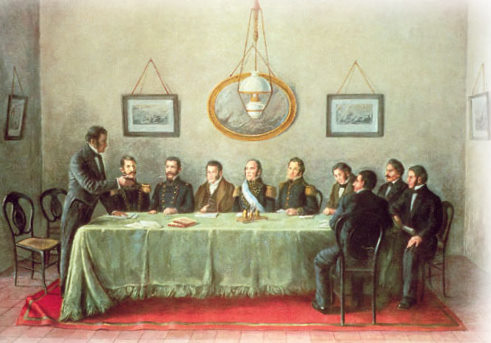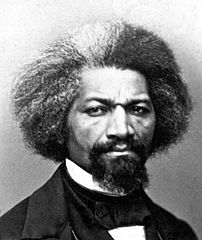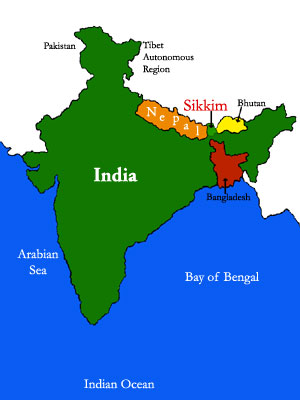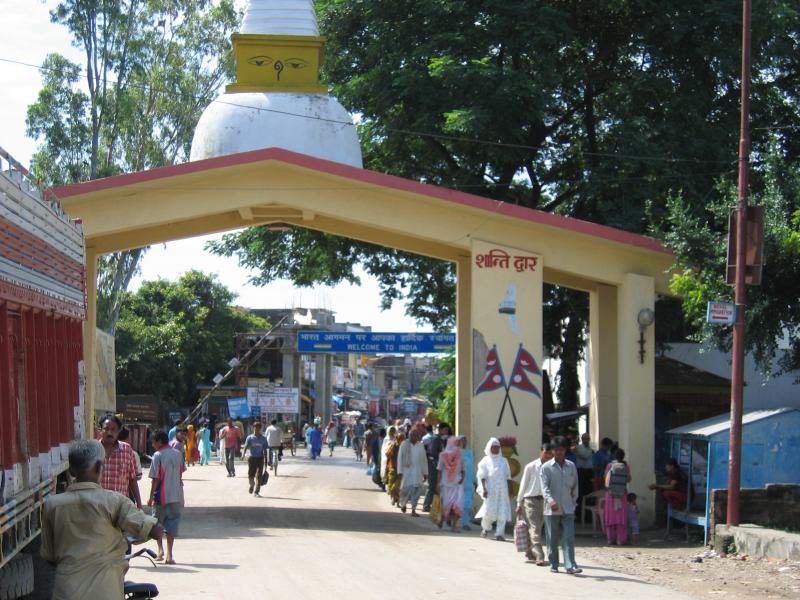US President Obama just announced a major policy change that will, at least temporarily, allow some immigrants a reprieve from the threat of deportation. Co-blogger Michelangelo’s pointed out that this is still extremely far from the true liberal reforms which the unjust, draconian US immigration system sorely needs. People are falling over themselves to contest the constitutional permissibility of Obama’s actions — for more on that, see our guest blogger and law professor Ilya Somin’s take. Irrespective of that legal issue, Michelangelo is right that we need to dream bigger — so let’s talk about one country in the world which legally enshrines freedom of movement as a universal human right: let’s talk about Argentina.
Now, I don’t have the time or space in this post to cover every single aspect of the Argentinean story: despite the many parallels between Argentina and any number of Western or developed countries you can name, Argentina is not the canonical open borders country; it does not represent a template that can be copied whole sale. Neither can it be a representative test case illustrating the likely effects of open borders if another country were to adopt them.
The empirical learnings to be had from the Argentine experience are worth a whole set of blog posts, if not books. Today, I want to just talk about the laws and constitution that govern immigration to Argentina — for in of themselves, they prove that what so many restrictionist naysayers call legally and philosophically impossible can in fact be done without the nation-state collapsing into a black hole of philosophical contradictions.
Argentina, like the US and many other countries, has a long history of being shaped by migration. Prior to the abolition of international open borders in the early 20th century, as much as a third of the Argentine population was comprised of immigrants. Over the course of the 20th century, restrictive immigration laws were introduced by various dictatorships, and the immigrant population eventually dwindled to a small fraction of its former size. So far, the Argentine story is much like that of every other country in the world: open borders up until the early 20th century, and restrictionism thereafter.
Up until a decade ago, Argentinean immigration law was like that of any other country’s. It disclaimed and disdained any concept of freedom of movement as a human right. Sizeable populations of undocumented migrants lived in the shadows, legally separated from the course of ordinary human life, and routinely deported when discovered. This legal-philosophical framework, we are supposed to believe, is the natural order of things: it is impossible to have an immigration law that abolishes arbitrary deportation, impossible to have an immigration law that recognizes mobility as a human right.
But in 2004, the Argentine government swept all this away, and adopted a new immigration law, simply labeled Law 25.871. This unremarkable name aside, the law is sweeping in its defence of movement as an inalienable human right. Article 4 states simply:
The right to migrate is essential and inalienable to all persons and the Republic of Argentina shall guarantee it based on principles of equality and universality.
The law does not go as far as to abolish visa or border controls, but it lays out a simple — at least on paper — process to immigrate to Argentina: find an employer or family member who will sponsor you. Once sponsored, you become a temporary resident. After one to two years, you can apply for permanent residency. After a few more years, you become eligible to apply for naturalisation as a citizen. There are no visa caps or quotas to worry about — something which already puts the Argentine system way ahead of every other country in the world in respecting the human right to migrate.
But Argentina goes further: not every individual who enters Argentina might be able to find a sponsor. And although the law prohibits entry without a visa or similar legal documentation, people will find a way in — not least because you could always just overstay a temporary visa. It’s virtually impossible to seal your borders without becoming a military dictatorship. And Argentina recognises this, with Law 25.871 declaring that those who migrate to Argentina without legal residency are simply “irregular migrants”.
Remarkably, Law 25.871 bans discrimination against irregular migrants in the provision of healthcare or education. Deporting an irregular migrant requires a court hearing, and generally may only be executed if the government offers the irregular migrant a chance to regularise their status, and the migrant refuses this offer. Exceptions, of course, are made for criminal convicts and the like, but otherwise, deportation is rarely enforced, and instead large-scale “amnesties” — though the more accurate term would be regularisations — have been the norm. The International Detention Coalition summarises Argentine deportation policy:
Migration decisions are made by immigration authorities but are reviewable by a court, with no detention during this period. Legal aid is available throughout the deportation process for all irregular migrants. Deportation and detention are both decisions that must be ordered by a court, with detention used only as a final resort after all other remedies are exhausted. Detention is limited to 15 days pending removal. In practice, migrants who have been committed to prison for criminal offences are the only immigration detainees.
One American immigrant to Argentina worried about his spouse overstaying their visa and becoming an irregular migrant describes what happened when he asked an immigration official what he should do:
Then we spoke with another, much kinder immigration official who assured us that there is absolutely no deportation law in Argentina. She laughed when I told her that I feared that a white van would come to our house to take my spouse and deport him. She told me that Argentina is not the United States and they don’t treat immigrants this way. The only time that Argentina would ever consider deporting someone who is illegal is if he or she commits a crime.
Imagine that — a country with no deportations! It’s not just easy if you try: it’s actually real! But not all is roses, naturally: the continued existence of large populations of irregular migrants in Argentina points to the failure of the government to live up to the law it passed. Anecdotal evidence suggests that bureaucratic red tape often constitutes a barrier to successful sponsorship — and while this is a mere headache for middle-class immigrants, for semi-literate members of the working class, complying with the requirements of immigration laws can be more than onerous.
Argentina is hardly unique in this regard: when my family immigrated to the US (after first overcoming the ridiculous quotas that kept us waiting for about two decades after our visa petitions were first submitted), we had to provide documentation from the local police in every jurisdiction we’ve lived in showing that we’ve been citizens in good standing with the law. Obtaining this documentation is at worst a nuisance for a middle-class person — and even then, since documentary burdens like these are many and cumbersome when you’re dealing with immigration authorities, a lot of people in our shoes would have outsourced this gumshoe work to an expensive lawyer. For a working class person who might have frequently moved around a lot without keeping many records, and whose educational attainment may not go past elementary school, obtaining this sort of evidence can border on the impossible.
Aside from the burdensome red tape that makes legal residency difficult to attain, Argentina also strangely upholds legal persecution of irregular immigrants: landlords and employers who do business with irregular migrants are singled out for punishment by Law 25.871. Clearly this has not stopped Argentineans from doing business with irregular migrants, but this does seem discordant with the rest of the law: notably Law 25.871 explicitly states that all leases and employment agreements which irregular migrants enter into will be upheld and enforced by the courts, even though entering into these agreements is in of itself an offense.
Argentina does not have truly legal open borders, but it comes remarkably close. If the bureaucratic requirements for obtaining residency were loosened and the fines for employing or renting to irregular migrants were abolished, I think Argentina would basically have open borders — because every person seeking to travel to Argentina for work, study or pleasure would be free to do so. Those seeking to commit crimes would still be punished and subject to exclusion; all others seeking to move and live in peace would be let in peace.
Argentina is a remarkable counterpoint to those who allege that open borders are by definition inconsistent with national sovereignty, or that open borders by definition threaten the social compact governing the welfare state. We on this blog have spoken a lot about how governments are free to limit migrant access to welfare, and other similar policies that we call keyhole solutions.
Argentina is faring just fine despite throwing these out the window: even irregular migrants have full access to both private and public education and healthcare, and are generally allowed access to other social benefits too. In fact, other keyhole solutions we’ve discussed, such as the imposition of tariffs or additional surtaxes on migrants, are unconstitutional.
That’s right: Law 25.871 didn’t pull the concept of the right to migrate out of thin air. Argentina’s history of open immigration dates a long way back, all the way back to 1853 when it adopted its constitution. Article 16 consciously adopts an egalitarian stand on the rights of citizens and foreigners, treating them all as inhabitants entitled to the same freedoms under Argentine law:
All its inhabitants are equal before the law, and admissible to employment without any other requirement than their ability. Equality is the basis of taxation and public burdens.
The rhetoric about equitable taxation is remarkably repeated twice more. Article 20 of the Argentinean constitution elaborates on egalitarian treatment of foreigners:
Foreigners enjoy within the territory of the Nation all the civil rights of citizens; they may exercise their industry, trade and profession; own real property, buy and sell it; navigate the rivers and coasts; practice freely their religion; make wills and marry under the laws. They are not obliged to accept citizenship nor to pay extraordinary compulsory taxes. They may obtain naturalization papers residing two uninterrupted years in the Nation; but the authorities may shorten this term in favor of those so requesting it, alleging and proving services rendered to the Republic.
No extraordinary taxes — and foreigners enjoy all the same civil rights as citizens! And Article 25 of the constitution states:
The Federal Government shall foster European immigration; and may not restrict, limit or burden with any tax whatsoever, the entry into the Argentine territory of foreigners who arrive for the purpose of tilling the soil, improving industries, and introducing and teaching arts and sciences.
No tariffs on the entry of immigrants either! We’ve proposed such schemes as potential mechanisms to mitigate possible fiscal burdens of managing migrant inflows, but Argentina has expressly ruled these out — and yet nobody can say that open borders or open immigration are what is ruining Argentina. Argentina has easy naturalisation (you can become a citizen within five or six years of entering the country) and birthright citizenship for anyone born on its territory — all things restrictionists dread — and yet hardly anyone can say this is what’s ruining the country.
If anything, Argentina seems to have been designed as a decisive rejection of all the philosophical ideas immigration restrictionists hold dear. Most arguments for the arbitrary restriction of immigration rest on this moral philosophy sometimes labeled as “citizenism”: the belief that the government of a country is justified in excluding, abusing, and mistreating non-citizens as long as this is for the benefit of its own citizens. Even if these non-citizens come in peace, even if they want to work with you, work for you — the government has no business considering any of this. The government is established for the benefit of current citizens alone, to the exclusion of all others.
 Acuerdo de San Nicolás de los Arroyos, a treaty between different governors signed in 1852 to convene a Constitutional Convention that drafted the constitution of 1853, source La Guia 2000, discovered via Wikipedia
Acuerdo de San Nicolás de los Arroyos, a treaty between different governors signed in 1852 to convene a Constitutional Convention that drafted the constitution of 1853, source La Guia 2000, discovered via WikipediaWell, the preamble of the Argentine constitution explicitly rejects citizenism — I’ve added emphasis to make this clear:
We, the representatives of the people of the Argentine Nation, gathered in General Constituent Assembly by the will and election of the Provinces which compose it, in fulfillment of pre-existing pacts, in order to form a national union, guarantee justice, secure domestic peace, provide for the common defense, promote the general welfare and secure the blessings of liberty to ourselves, to our posterity, and to all men of the world who wish to dwell on Argentine soil: invoking the protection of God, source of all reason and justice: do ordain, decree, and establish this Constitution for the Argentine Nation.
A constitution that insists on treating immigrants as virtual equals with citizens, and a constitution that enshrines immigrants’ rights to justice, peace, welfare, and liberty: it sounds like an utopian dream, but it is real, and it’s in Argentina.
There are many things not to recommend about Argentina; its overly burdensome red tape, both in immigration and in just about every other arena of public life, famously strangle ordinary economic activity. The long legacy of Peronism has seen Argentina’s economy stagnate, and even today, Argentina’s government chronically mismanages the public fisc. But none of these problems have anything to do with immigration, and everything to do with problems endemic to the culture of Argentinean public life — a culture that has remained remarkably resilient despite Argentina’s long history of open immigration and now its reopened borders.
Argentina is far from perfect, but its constitution and immigration laws show us the way forward in guaranteeing the just and equitable treatment of all human beings subject to our governments’ laws, be they citizen or foreigner. In drafting their constitution, Argentina’s founding fathers drew on the constitution of the United States. Perhaps now those Americans opposed to open borders and freedom of movement would do well to take a page from the Argentine playbook, and remember the wisdom of their own founding fathers.
The American and Argentine tradition of open borders did not emerge from a legal or philosophical vacuum, after all. At the founding of modern Germany in the 1860s, German legislator Wilhelm Liebknecht articulated the legal rationale for egalitarian principles like those upheld in Argentina’s constitution and immigration laws:
A right that does not exist for all is no right… Gentlemen, it is necessary for us to proceed in the same fashion that England, that free country, has already taken, and to extend to foreigners the same right that exists for Englishmen. There is no such thing as police expulsion in England; the government there does not have the right to deny someone their place of residence.
Or, as one of Liebknecht’s colleagues put it,
…it is a barbarity to make a distinction between foreigners and the indigenous in the right to hospitable residence. Not only every German, but every human being has the right to not be chased away like a dog.
I could not have said it any better myself. Argentina is not perfect, but its laws come far closer to the wisdom of our ancestors on freedom of movement than the laws of virtually any other country today. Obama’s action to provide relief from deportation for a few million American immigrants is welcome, but it is not true justice. There cannot be justice until America, and every country in the world, recognises that every human being has the right to not be chased away like a dog. Stop the deportations — not one more!
I am indebted to Barbara Hines’s The Right to Migrate as a Human Right: The Current Argentine Immigration Law and discussions with members of the Open Borders Action Group for their assistance in preparing this article.
Source for featured image: We didn’t keep track of the original source, because there are many similar images available via Google Search. This might have been the original source.
Related reading
 (Image source: Christian Science Monitor)
(Image source: Christian Science Monitor)

 It is truly curious to me that the main reaction of the mainstream media was to label this as racist. The Indianapolis Star actually initially responded to criticism by removing the immigrant’s mustache and republishing an otherwise identical cartoon! Of all the the things wrong with this image, race is the last thing I would single out. The problem isn’t inherently its depiction of race relations; if anything, it’s hard to say without knowledge of the political context what the ethnicity of that immigrant might be. The problem is inherent to this image’s portrayal of how immigrants actually conduct themselves in society.
It is truly curious to me that the main reaction of the mainstream media was to label this as racist. The Indianapolis Star actually initially responded to criticism by removing the immigrant’s mustache and republishing an otherwise identical cartoon! Of all the the things wrong with this image, race is the last thing I would single out. The problem isn’t inherently its depiction of race relations; if anything, it’s hard to say without knowledge of the political context what the ethnicity of that immigrant might be. The problem is inherent to this image’s portrayal of how immigrants actually conduct themselves in society.


 Acuerdo de San Nicolás de los Arroyos, a treaty between different governors signed in 1852 to convene a Constitutional Convention that drafted the constitution of 1853, source
Acuerdo de San Nicolás de los Arroyos, a treaty between different governors signed in 1852 to convene a Constitutional Convention that drafted the constitution of 1853, source 
 The open border between India and Nepal, source
The open border between India and Nepal, source